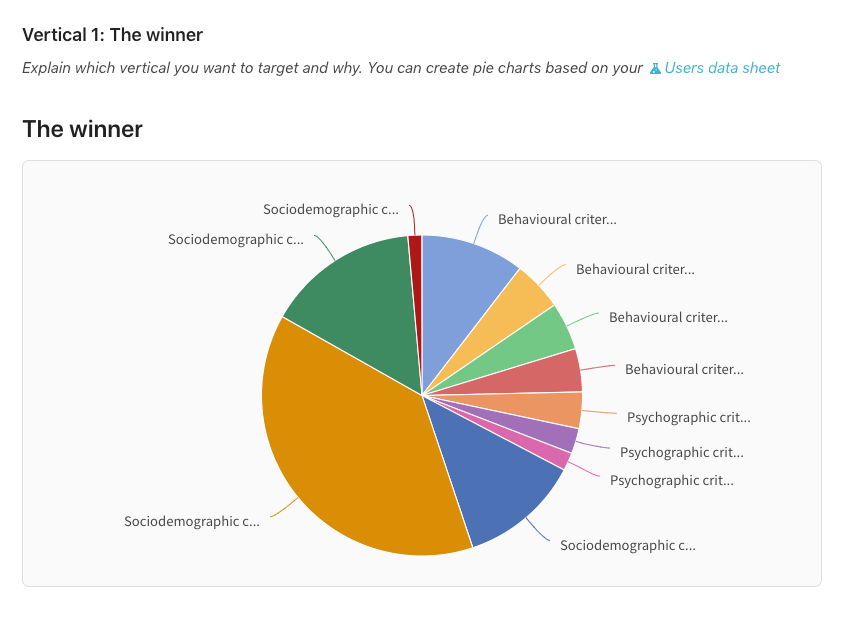When you run large scale projects, organization is key to success. An organized project means that the folks working on it understand where certain pieces of information live and how to find and interpret them. Plus, it allows the project organizer to express clear and defined goals for the team to rally around.
Often, mission critical documents live in hard-to-search apps, spread out across different folders and even different tools. You can link to important folders and documents within another file, but once you're in the right place, the app might not offer the features you need—and you're back to the drawing board. This makes organization a bit like herding velociraptors.
For Fred Castagnac and Sean Kennedy, product marketing managers at Zapier, this situation is all too familiar. As a completely remote company, Zapier's team works together across the globe; Fred lives in France while Sean's in Canada, and their coworkers live in many disparate time zones. Organization is essential—and they were in search of one app that could help them accomplish it..
After speaking with other professionals who had the same issues, they were both turned on to the supercharged document app Coda. Coda combines documents with spreadsheets, and app-like user experiences, all in one app.
Fred and Sean each decided to implement it with their respective teams based on their current project based needs; Fred for her work on all things user and market research and Sean to track ongoing product marketing initiatives.
How Coda Changed Fred's Approach to Project Management
Before discovering Coda, Fred organized product launches across various apps. She'd house the project's data in Google Sheets and used another document app for content, like each person's role, deadlines, and other information about the launch.

"When you work on a product launch, data and content are the two main things you rely on," she explains. "Every time I invited someone to collaborate, I had to share a bunch of documents."
What I really like about Coda is that everything is in one place—you can sync an entire team with a single URL.
Fred Castagnac, Product Marketing Manager, Zapier
After speaking with a peer at Intercom, Fred tried out the Intercom Product Launches template and adjusted it for her team’s unique needs.
Now, Fred gathers all of the data she needs in one space, creating pie charts that everyone involved can easily read and interpret, leading to faster and smarter decision-making. Sean takes his use of Coda one step further by integrating it with Zapier and adding automated workflows to his repertoire.
How Sean Uses Coda as an Information Hub
Like Fred, what drew Sean to Coda was the ability to house all his information in one space: "If you’re working on a project, you only need the one Coda file, and each section would be the equivalent to a separate doc [in another app]," he says.
"This really appealed to me—it meant all the information I needed was in one place, and I didn’t need to go searching through folders for all the other relevant documents."
Coda is like having an Airtable inside my text doc; that makes me so happy because I have all the functionality I need in a single file.
Sean Kennedy, Email Marketing Manager, Zapier
Coda requires no technical skills, but Sean’s engineering background helped him unlock the advanced power of Coda’s relational database system, so that he can use formulas, functions, and graphs to easily track where things stand in production.

Sean's Tools
In order to keep Coda up-to-date with the most accurate information, Sean uses Zapier to connect Jira to Coda. Sean's Zap sends Jira updates directly into Coda, where functions and formulas take over to track different project statuses.
Then, another Zap shares notes in Coda to a specific channel in Slack. This Zap means the marketing team can stay up to date in one of the team's normal communication channels, instead of having to poke around in Jira.
In this way, Sean’s approach to Coda has made it a centralized marketing management hub. Here are a couple of the Zaps Sean uses, so you can begin to create your own hub:
Create rows in Coda when new issues are created in JIRA
Update rows in a Coda doc when your team makes updates in JIRA
Our teams are continually tinkering with and testing Coda’s functionality, but for now, it’s giving our internal teams the best of everything. Power users can leverage its native formulas and functions for more complex needs, while the UX/UI is so easy to use that new users can get it implemented with little ramp up time. Best of all, if they have any questions, Coda’s community is so passionate that you’re never learning alone.
Want to use Coda with Zapier in your own project management? Give Zapier a try for free.
What's your story? Tell us how you use Zapier to do more. You can also read even more customer stories and find new ways to improve your workflow and productivity.








